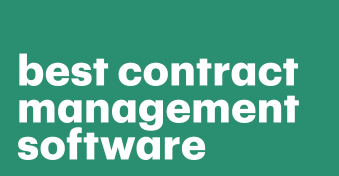Be it a multi-million dollar business or a homegrown venture – everyone needs contracts to ensure a smooth-flowing process.
If you don’t have the necessary documents and contracts properly set in place, you could be liable for legal penalties and potential losses.
More importantly, if a problem arises — someone messing up a task who is either working for you or with you — you won’t have any concrete evidence to hold your clients or vendors accountable.
That being said, contracts have been in style for a long time now. Everyone knows you need them, and almost everyone makes sure to keep them.
On the other hand, contract lifecycle management can help you stay ahead of the curve by embracing the key concept here: Comprehensive management over the entire lifecycle of your contractual agreements.
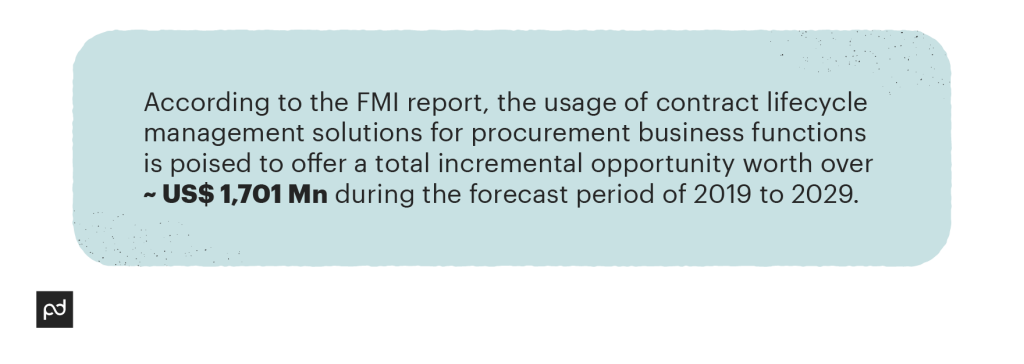
Dan Townsend, an industry veteran in the areas of contract and compliance management, says:
“CLM is important if your business wants to maximize your potential and streamline the contract management phases to improve efficiency and cost.”
Dan Townsend
There’s truth to what Dan is saying, and reading this article will serve as an effective guide in helping you understand what CLM is, what CLM does, and why you should get CLM for your business.
Let’s dive in!
What is contract lifecycle management (CLM)?
Every contract has its own lifecycle. This includes everything from creation to the renewal of the contract, with many stops in between (like approval, execution, performance, etc.).
With the help of contract lifecycle management, you can now stay on top of all the deals that you’ve signed.
This means that every department is well equipped to simultaneously collaborate on a contract to best understand client deliverables and execute everything within the requested timeline.
Here’s a simpler way to put it: If you’re stuck with poorly organized digital folders, if you feel the need to revisit your contracts many times, or if there’s a disconnect amongst departments of your organization on client deliverables — then you need contract lifecycle management in place.
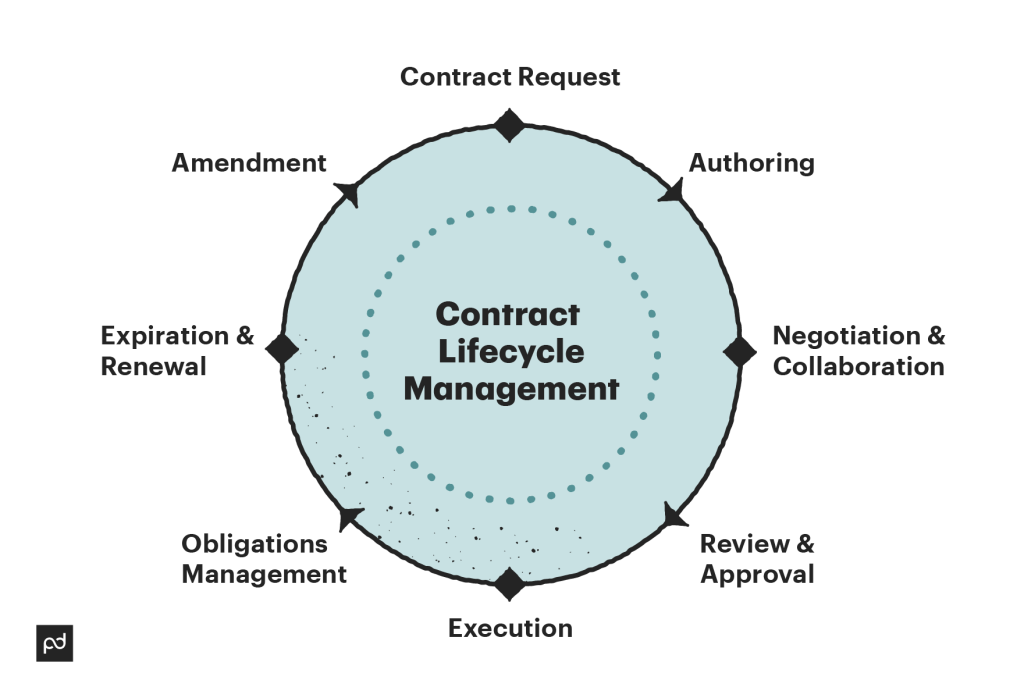
Why, you ask? Because contract lifecycle management is intuitive. Unlike manual contracts, you’re not stuck with tons of physical archives. You can now find out everything with the click of a button.
Imagine the difference between using a library vs using a search engine. You need physical bookmarks, in-depth reading, space, etc., to retain information that you’ve learned in a library.
But if you use a search engine, all you have to do is look up a search term to get the answer.
Manual contracts and digital contracts are just as apart in their functionalities.
CIO Talk Network has a powerful podcast that covers all the ins and outs of CLM and also sheds light on industry insights.
Featuring Peggy Barber, The Americas CEO and General Counsel for the International Association for Contract and Commercial Management (IACCM), and Saugat Dutta, Country IT Head/CIO, DP Worldwide, the podcast is as interesting as it is instructive.
Why is contract lifecycle management needed for modern businesses?
Businesses that employ contract lifecycle management can expect to see many benefits, including:
1. Increased efficiency
With CLM, you get to centralize every part of contract management. This means that everything is where you need it to be and you can easily access it with the click of a button. No need to spend time searching for things.
Furthermore, having CLM in place also means that you get to onboard clients, authenticate documents, complete formalities, sign contracts, look for deliverables, and do lots more with an automated workflow.
Your days of chasing after clients to sign contracts within the requested deadline are over.
2. Transparency
When you sign a contract, all parties need to be informed about the scope, benefits, KPIs, risks, deadlines, deliverables, etc.
To build trust, you need contract management software that allows every party to see all the important things in one place.
Contract management software can not only help you promote transparency with your clients and vendors, but can also help departments of your own organization stay on top of things.
3. Risk mitigation
Risk management is perhaps one of the most important reasons why people keep contracts in place. With CLM, you improve your capabilities of monitoring and managing risks.
Because everything is in the same place, you get to stay updated about deadlines, project deliverables, compliance policies, regulatory issues, etc.
If you’re a business that deals with multiple vendors, clients, and contractors, then CLM can benefit you far more than manual contracts.
And these benefits are just the tip of the iceberg.
There are many other advantages, such as a better understanding of internal spending, improving employee experience, automating processes, etc., that you can achieve.
Let’s also look at a case study from Newgen that might help in highlighting the importance of CLM.
A Fortune 500 food-and-beverage client of Newgen’s faced these issues:
- No central repository.
- No notifications to inform about the expiration of contracts.
- Difficulty in maintaining a template.
- No information about document tracking.
- Manual processes that created high turnaround time.
With the help of Newgen’s CLM software, the brand was able to address the issues.
At the end of the day, the client achieved the following results:
- An inbuilt repository where documents could be securely stored and retrieved.
- A unified solution that managed their needs.
- Software with the ability to track changes.
- And a system that monitored reminders.
Stages of a contract lifecycle management
1. Find templates
These days, it would be difficult to find a contract that is completely made from scratch.
Almost every contract has a templated design that can be customized as per business needs. Your task at this stage is to find a contract template that aligns with your needs.
If you have CLM software, then there’s a high probability that they’d have a contract repository of templated options (like PandaDoc does).
But if they don’t, then here’s all that you need to know about the types of contracts you can build:
Fixed price contract
A fixed-price contract is the one where you receive the same payment, irrespective of how many hours you invest into a particular project.
For example, some designers prefer to have a fixed price for their services, rather than timing their prices with hours. With a fixed-price contract, the key metric is the scope of work.
Clients prefer this method as they know the exact price they will pay before they enter into an agreement.
Cost-plus contract
With a cost-plus contract, you agree to pay vendors a fixed percentage for their services and reimburse them for the costs incurred during the time they pursue your project.
The cost-plus contract is very popular in the construction industry, as prices vary depending on the materials used, transportation costs incurred, charges for labor, etc.
However, the definitions of rates, costs, and percentages are very clearly detailed in this contract.
Time and materials contract
Time and Material contract, as the name suggests, pays contractors for their time and the materials (together, they can also be viewed as resources) they invested in the project.
The construction industry is one of the most significant sectors to use the T&M contract, as there is no way to predict how much a project will cost until it is completed.
Speaking of contracts (as we’ve been doing this entire article), it’s perhaps best to mention that PandaDoc also has an extensive contract template library.
You can get all types of contract templates, irrespective of your business or project needs.
Input stage: Try to find templates that align with your business needs.
Output stage: Decide on a template that you like.
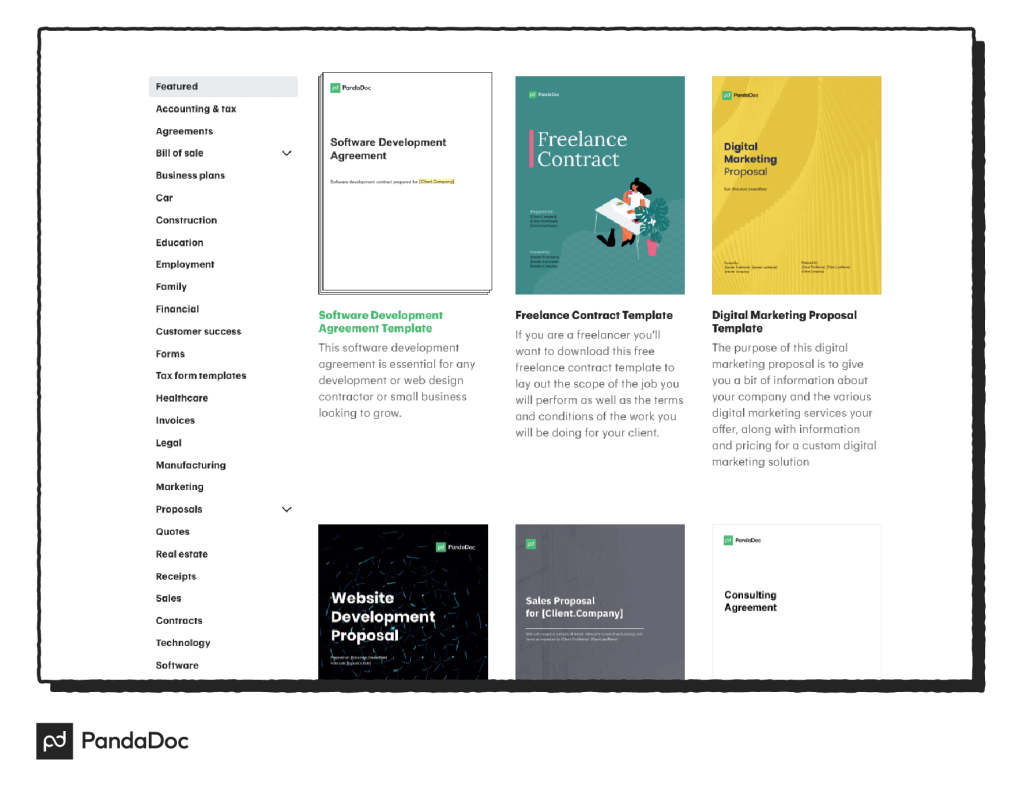
2. Contract creation
During this stage, you ideally begin to work on the KPIs, clauses, conditions, terms, deliverables, liabilities, etc.
If you already have a ready-made template in place, then some CLM software will also allow you to upload them for self-authoring contracts.
When it comes to the contract process, every stage is essential.
That being said, the contract creation stage takes precedence in priority, as it will help set what your future milestones with your stakeholders can look like.
Because every contract has differences due to the nature of particular businesses, you would either need a template or the help of a legal team to smooth out this stage for you.
Clauses you need to know
Irrespective of the nature of your business, and the kind of contract you create, you need to know these clauses before you encroach on content creation.
Payment clause
The payment clause is perhaps the most crucial part of any contract, as it helps in giving a clear definition of how much you’ll be paid (or how much you’re paying) for time and effort.
When you’re finalizing the payment clause, don’t only specify payment for the completed project, but also consider mentioning late fees.
Confidentiality clause
Every business has systems, processes, and a set of expertise that allows them to fare well even with competition.
Having a confidentiality clause in your contracts can guarantee that you would be able to mention important information to stakeholders to grow your brand, without facing the risk of them revealing your secrets.
Liability clause
The liability clause is where possible repercussions are mentioned.
For example, if a past contractor ends up breaking the confidentiality clause, then the liability clause can help you seek compensation for the damages that occurred.
The same rules apply to any other stakeholder — for example, clients.
Termination clause
A termination clause can be your best friend when things go awry. A termination clause helps dictate the terms under which a contract can be terminated, without receiving any legal consequences.
While creating a termination clause, you might also benefit by adding a dispute clause in your contract.
Read more about it here: Four clauses every business contract should have
Input stage: Use the help of templates to create a contract.
Output stage: Send the contract for internal review.
3. Contract review
This is the stage where you forward the contract to your internal stakeholders or legal team so that they can check all details before you finally send over the contract to your client.
Having the contract review stage is necessary for the contract creation journey because it helps uncover any blind spots you didn’t realize were present.
Having someone else review the document to make sure that there are no errors can also help speed up the approval process. And you keep your internal team in the loop of all your obligations, processes, and contract data.
If you’re on the opposite end doing the reviewing, this resource might be helpful as it contains a “contract review checklist”: How to review contracts.
Input stage: Your team reviews the contract.
Output stage: Wait for contract approval.
4. Contract approval
Every company has a different approval process. Some take days to run it by multiple stakeholders, whereas others have an account manager responsible for permissions of all types of contract approval.
No matter what kind of company you’re dealing with, your end goal should be getting the documents approved asap. Thankfully, since CLM is entirely automated, you don’t need to remind the relevant parties via email for updates constantly.
They’ll receive a notification once you send them the document for approval and you’ll receive a notification when they approve it.
Side note: You may benefit from conducting an audit trail during this process.
Input: Address the feedback given by the internal team.
Output: Send the contract to the client for signature.
5. Contract execution
Contract execution is the stage that comes with some level of bliss because you’ve finally landed and signed on with the client.
However, regardless of how happy-go-lucky this stage may feel to you personally, this is also your opportunity to shine in front of your clients.
Make sure to keep track of all your project deliverables so that the client would want to renew the contract again.
LinkedIn recently published a resource on managing client expectations that might be helpful: how to meet client expectations.
Side note: Some European countries also require an ink-based signature (even if you have an eSignature) on the contract for it to be effective, so make sure you check in with your local rules and regulations to ensure that the contract is legalized in the eyes of the law.
Input: Try to meet client expectations and fulfill all deliverables mentioned in the contract.
Output: Analyze how the contract performed.
6. Contract performance
Like every marketing strategy needs A/B tests, every contract lifecycle management needs contract performance analysis.
Make sure you keep visiting and revisiting your performance and improve in places where you’re lacking.
It can also happen that when you go to check contract performance, you may find a few vendors who have exceeded your expectations.
Keep all the deliverables in mind for which you signed up when looking at your contract performance. Many managers employ the use of the project management triangle when measuring performance. Read more about the project management triangle here.
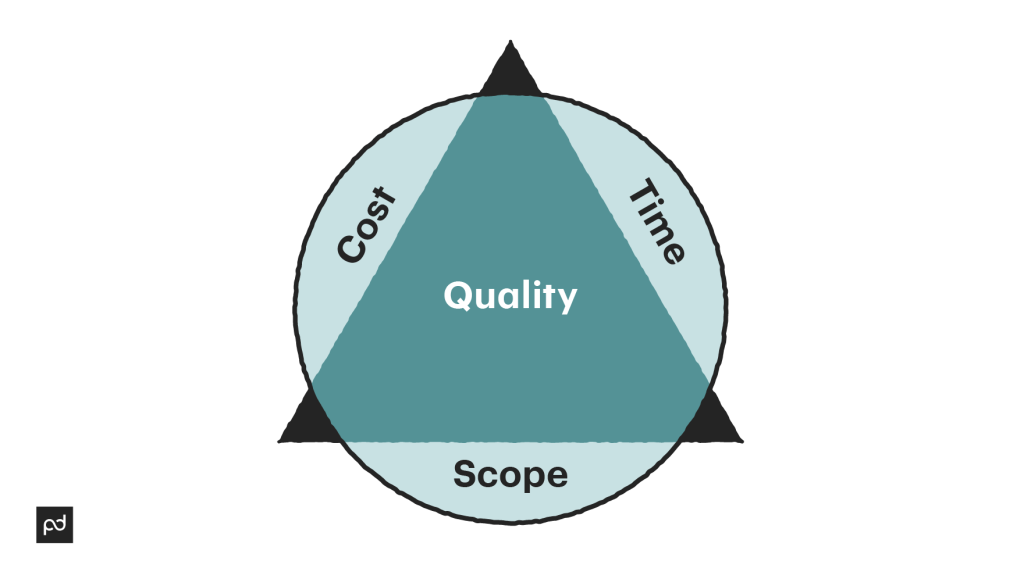
KPIs that you should measure when tracking contract performance
1. Order value variance from original contract value (OVV)
Order Value Variance from Original Contract Value (OVV) can help you understand the places where you need assistance with your contract.
With OVV, you can pinpoint the areas where there are inefficiencies in your contract’s effectiveness and quality.
2. Terminated contract remaining value (TRV)
Terminated Contract Remaining Value (TRV) is a KPI that measures outstanding bills and payments that have occurred through the entire contract lifecycle.
The reason why this metric is beneficial is that it helps you in recognizing the financial value of your customers.
3. Annualized contract value (ACV)
Annualized Contract Value (ACV) is a critical KPI that can measure the revenue every contract will generate within a time span.
For example, if a contract has a value of $15 million for 3 years, then the ACV is 5 (15/3). ACV also highlights the point where your customer turns out to be profitable.
4. Complaints resolved / Quality ensured
This metric helps measure the quality of the product received and finds out if the product(s) ever come back with complaints.
Measuring this KPI has proven to be an excellent strategy for manufacturing contracts. However, it may not be so fruitful in measuring the effectiveness of service contracts.
5. Vendor fraud
This KPI measures if any vendor or contractor has billed you for services/products you didn’t ask for.
Using this KPI can help you understand the places where most frauds happen, and what strategies you can use to minimize them.
6. Compliance
Compliance measures external factors of a contract. For example, if your contract is up to date with all the local regulations and policies.
You’ll also need to update your central repository keeping this KPI in mind. You can read more about these KPIs here: Six KPIs to measure the performance of your contracts.
Input: Measure the performance of your contracts.
Output: Revise strategies, if need be.
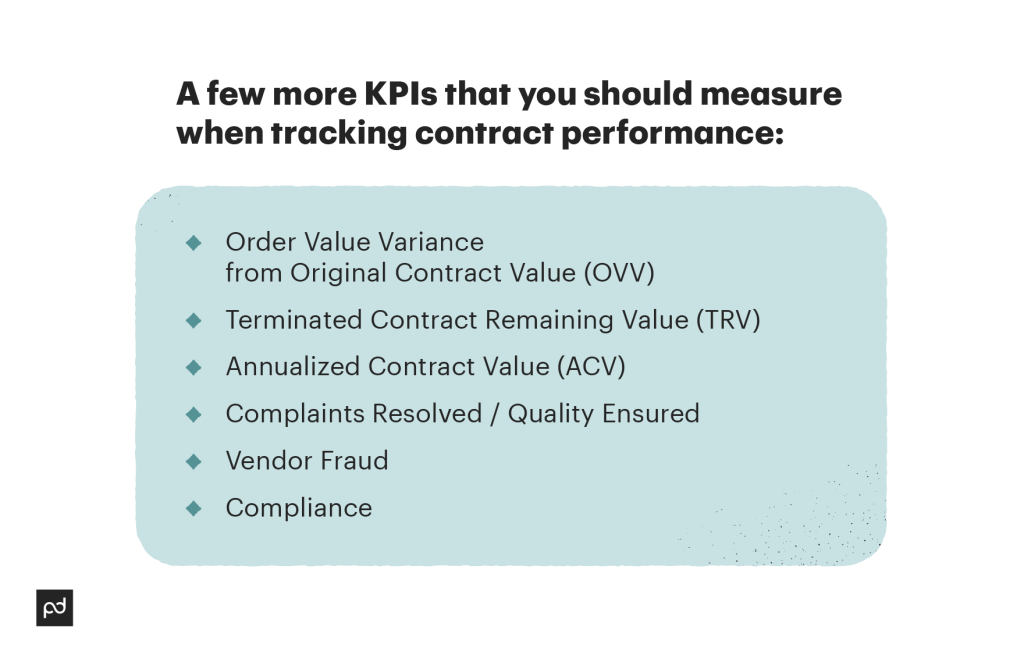
7. Contract expiration
Every contract has two exit plans: the first one is when the contract expires, and the second one is when the contract gets renewed.
At this stage, you’ve fulfilled all your contractual duties, and the client has completed their payments.
Once the contract expires, if both parties don’t wish to renew it, they can go separate ways. Alternatively, if any party wishes to renew the contract, they can have a conversation with the other one.
Your contract management software will update you when your contract is due to expire so that you can prepare for future stages.
Input: Complete all contractual requirements.
Output: Exit the contract.
8. Contract renewal
On the flip side, if you decide to renew a contract, you’ll have to restart at Step 2, at the contract creation phase, and will have to revisit the entire journey until the end.
Sometimes, if we have had a bad experience with a client, it makes complete sense not to want to renew the contract.
Reasons why you should opt for contract renewal
If your experience with a client has been decent or exemplary, then here are a few reasons why you should opt for contract renewal.
1. Get access to predictable income
You know that predicting cash flow is never easy if you’re a small business. Some days you can be flush with money; the other days, not so much.
Having a client you’ve worked with on the roster can help you with the peace of mind of knowing where your next paycheck will come from.
You can, however, at this stage, increase pricing, add incentives, push for an add-on service, etc.
2. The lifetime value of a customer
Every client has a lifetime value. If your customer has a high lifetime value, you can get higher profits on their account.
Here’s how to measure lifetime value: (Avg Value of a Sale) X (# of Repeat Transactions) X (Avg Retention Time in Months or Years for a Typical Customer).
If you end up losing a valuable customer, then getting another one to replace them means allocating time and resources, which is a direct cost to you.
3. You know their services well
This is perhaps one of the biggest pros (and perhaps a con) of retaining a customer — you know their service offering, you’re well versed with the way they work, and you’re comfortable with the brand.
It’s exactly in your comfort zone, which is why it’s easy to continue working with them.
However, staying in your comfort zone for an extended period of time can turn out to be a con if “too” comfortable — other opportunities may be missed because they will go unnoticed.
Input: Complete all contractual requirements.
Output: Renew the contract.
To conclude
Contract Lifecycle Management is a journey of its own. However, it’s undeniable that having this automation tool in your business will help you save time and money in the long run.
It’s slowly and steadily becoming a reliable accomplice for many companies’ successful sales strategies. Presently, the industry is estimated to grow 13% YOY.
So, if you’re looking to employ a contract management software that can:
- Eliminate bottlenecks
- Create efficient workflows
- Can be used anywhere, anytime
- And allows easy collaboration
— then PandaDoc might be just the software you need.
Disclaimer
Parties other than PandaDoc may provide products, services, recommendations, or views on PandaDoc’s site (“Third Party Materials”). PandaDoc is not responsible for examining or evaluating such Third Party Materials, and does not provide any warranties relating to the Third Party Materials. Links to such Third Party Materials are for your convenience and does not constitute an endorsement of such Third Party Materials.
